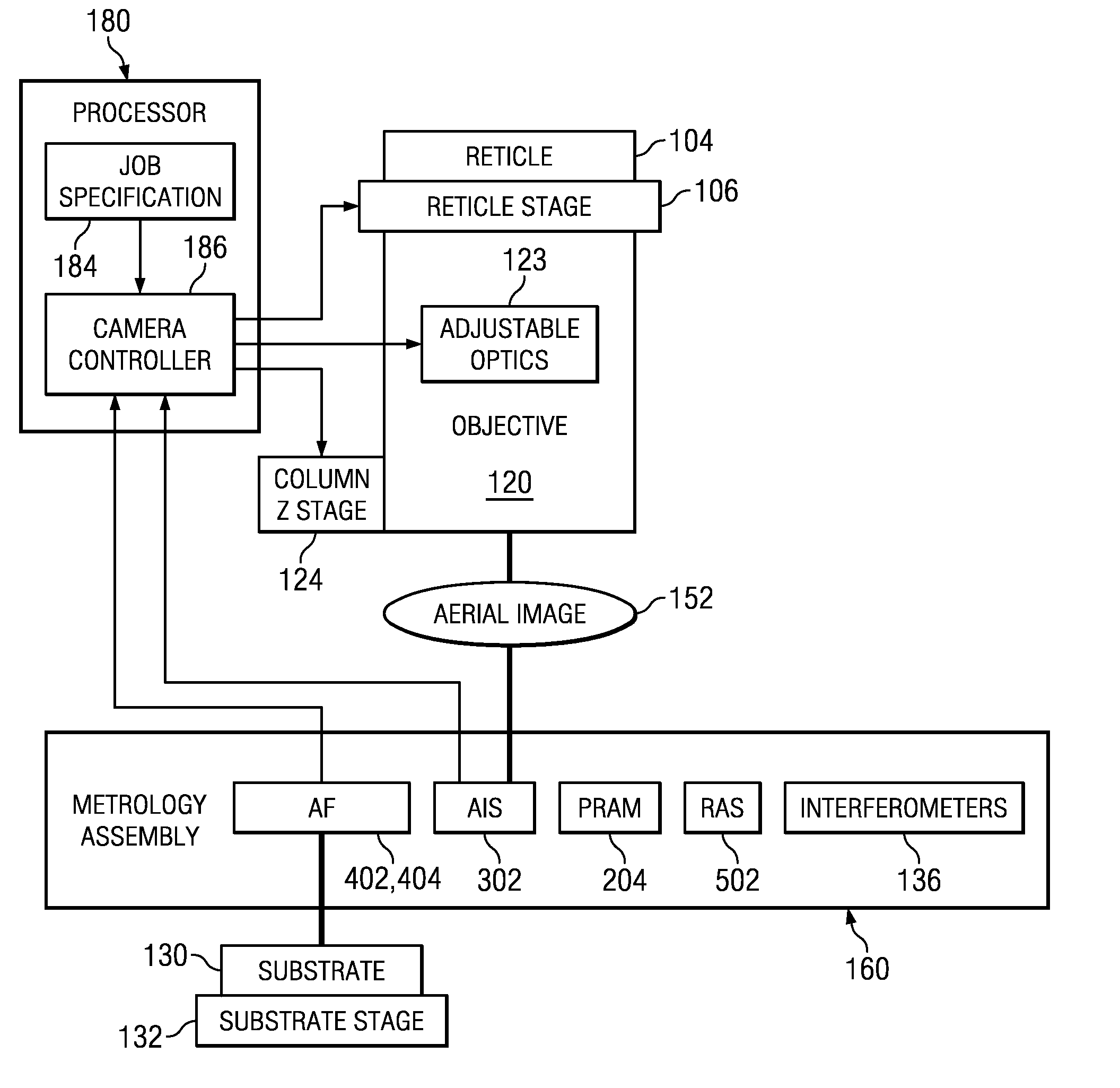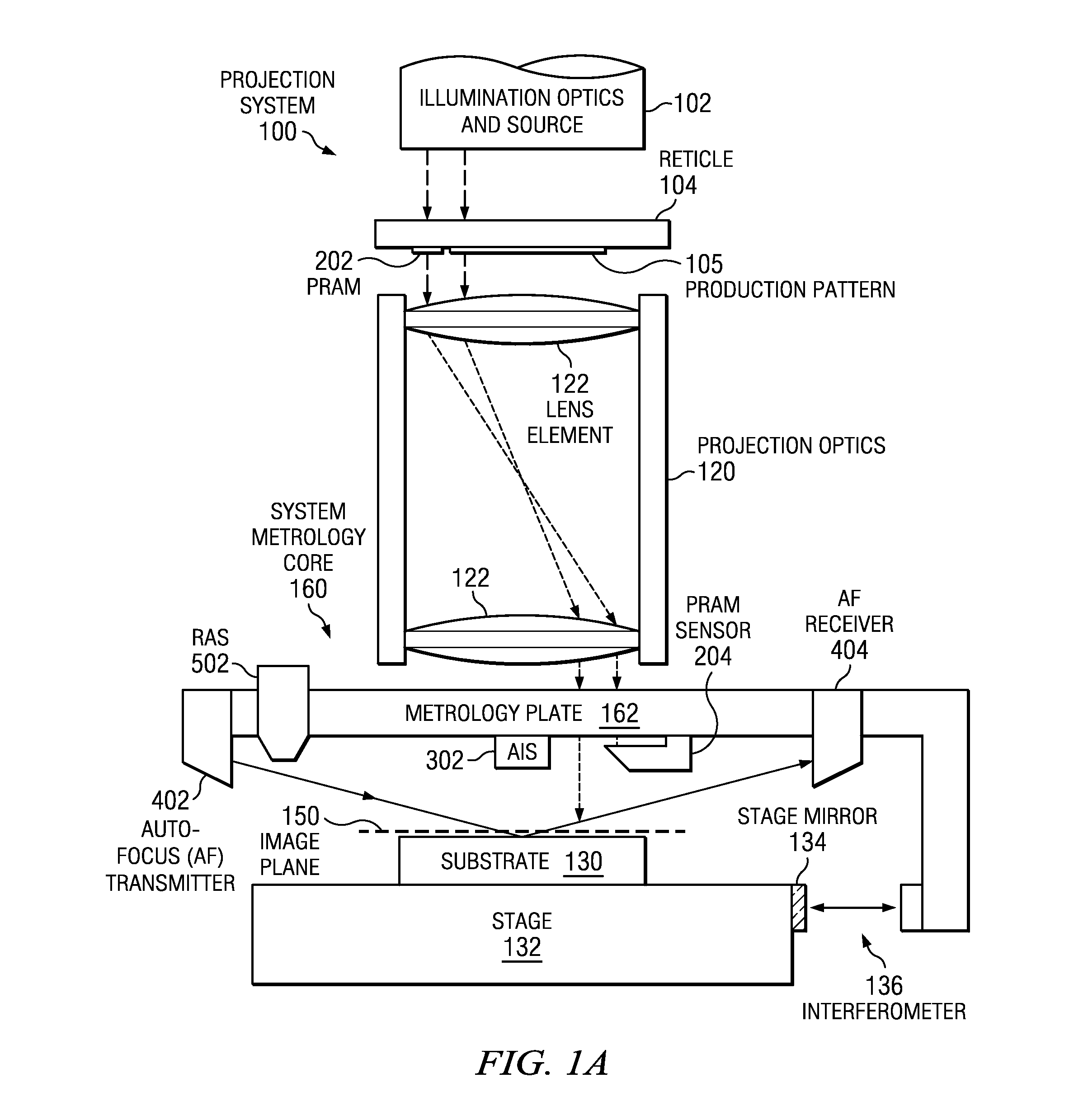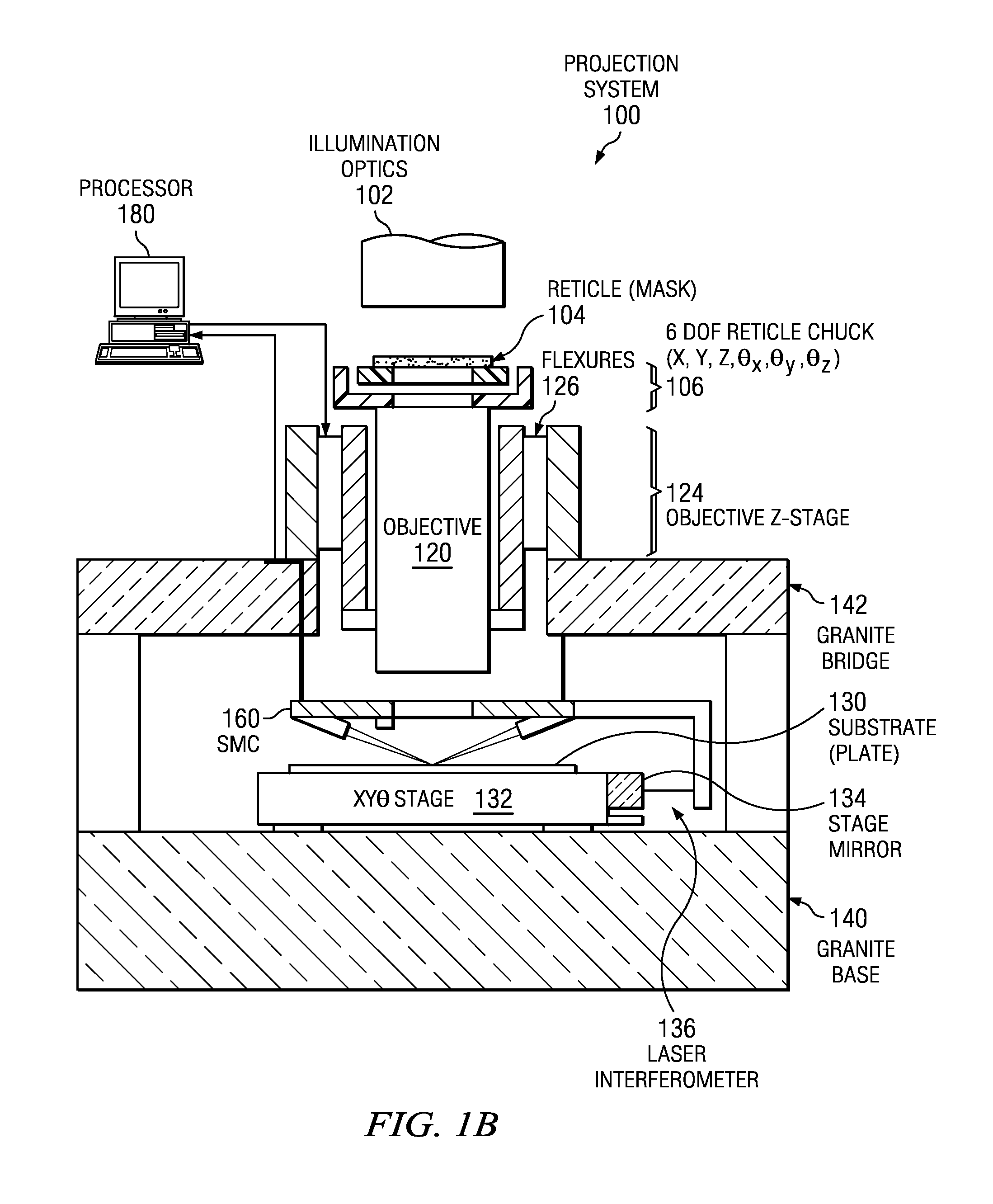System and method for estimating field curvature
a field curvature and field method technology, applied in the field of system and method for estimating field curvature, can solve the problems of affecting image quality, slow thermal compensation, and large source of error in heating and cooling the lens by the illumination source, so as to facilitate the coordination of multiple images, relax the constraints on expansion/contraction of components, and add design flexibility
- Summary
- Abstract
- Description
- Claims
- Application Information
AI Technical Summary
Benefits of technology
Problems solved by technology
Method used
Image
Examples
Embodiment Construction
[0026]A description of example embodiments of the invention follows.
[0027]FIGS. 1A and 1B show a projection system 100 that can be used to pattern a substrate 130, such as a wafer of semiconductor or a piece of glass, with a production pattern 105 on a reticle 104. Projection optics 120 image the production pattern 105 from the reticle 104, which is illuminated by an illumination source 102, to an image 150. Turning on the illumination source 102 exposes photoresist (not shown) on the substrate 130 to a dose of illumination in the image of the production pattern 104. After exposure, the production pattern 105 may be exchanged for a different pattern by switching the reticle 104 and / or the substrate 130 may be replaced or moved to a new location with a stage 132.
[0028]Ideally, the image 150 is coincident with one of the surfaces of the substrate 130. If the substrate 130 is a piece of glass coated with indium tin oxide (ITO) and photoresist, for example, the image may be coincident w...
PUM
| Property | Measurement | Unit |
|---|---|---|
| size | aaaaa | aaaaa |
| field curvature | aaaaa | aaaaa |
| curvature | aaaaa | aaaaa |
Abstract
Description
Claims
Application Information
 Login to View More
Login to View More - R&D
- Intellectual Property
- Life Sciences
- Materials
- Tech Scout
- Unparalleled Data Quality
- Higher Quality Content
- 60% Fewer Hallucinations
Browse by: Latest US Patents, China's latest patents, Technical Efficacy Thesaurus, Application Domain, Technology Topic, Popular Technical Reports.
© 2025 PatSnap. All rights reserved.Legal|Privacy policy|Modern Slavery Act Transparency Statement|Sitemap|About US| Contact US: help@patsnap.com



